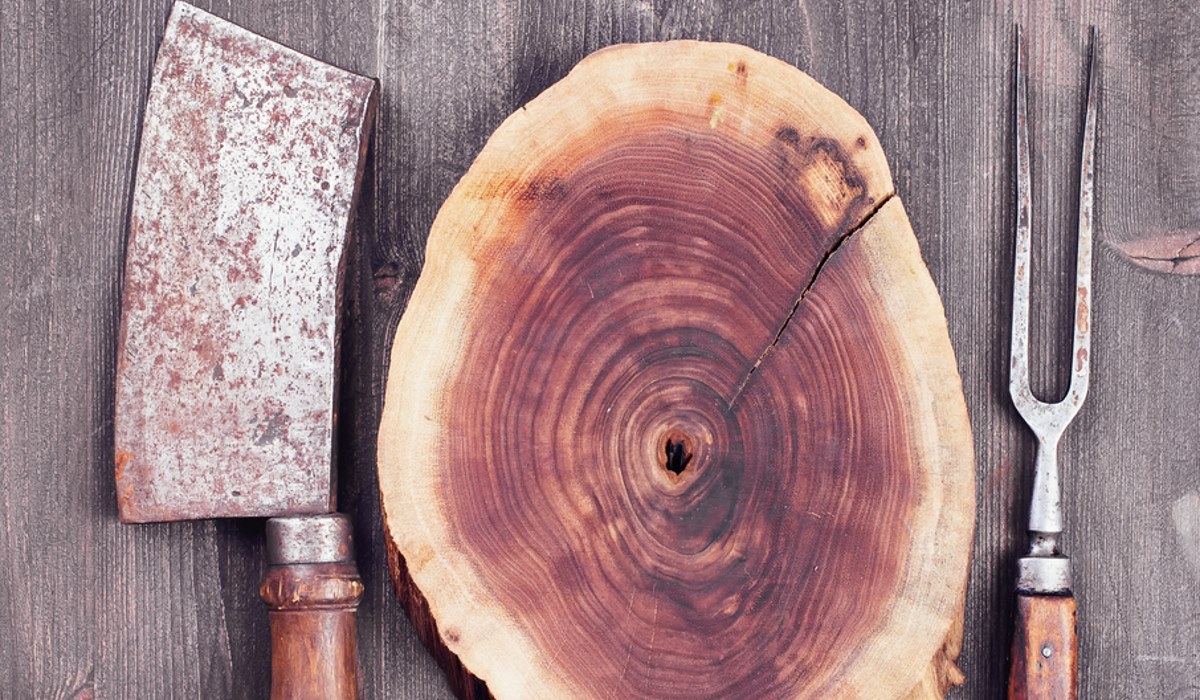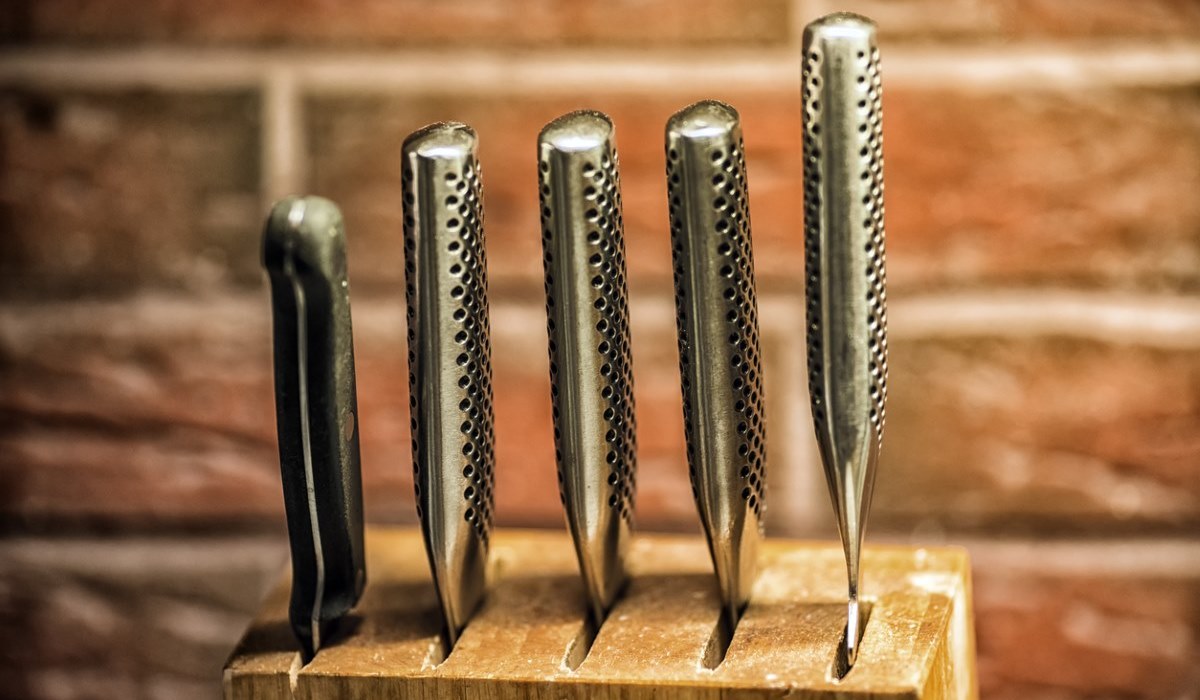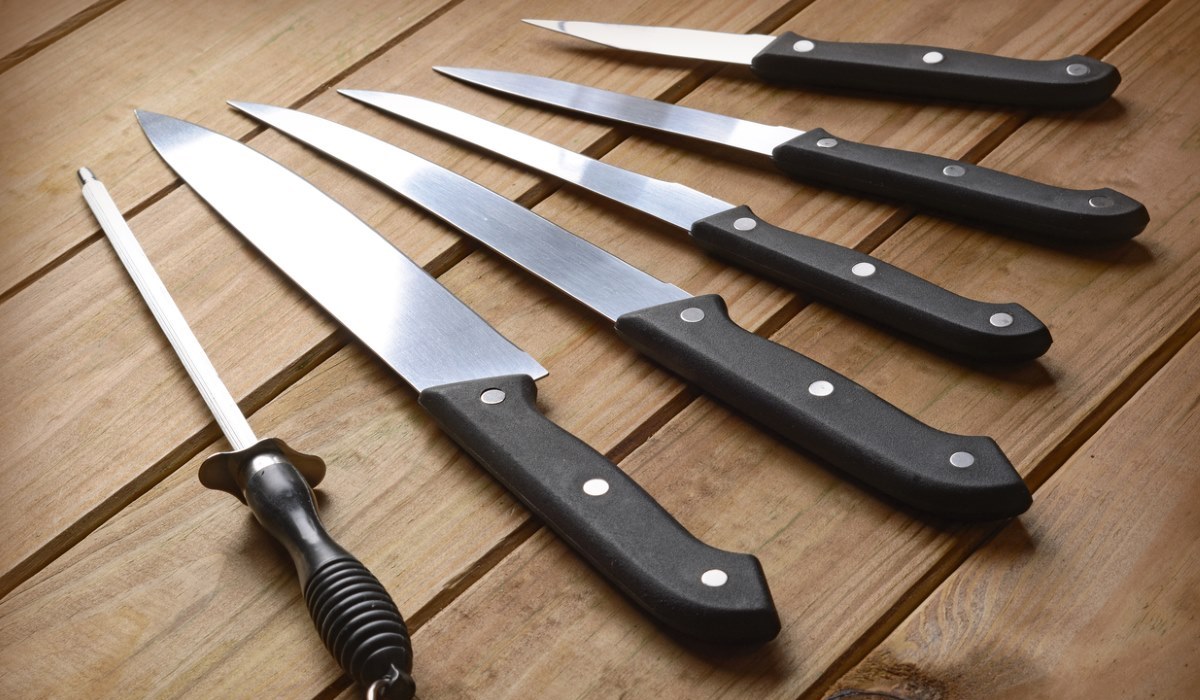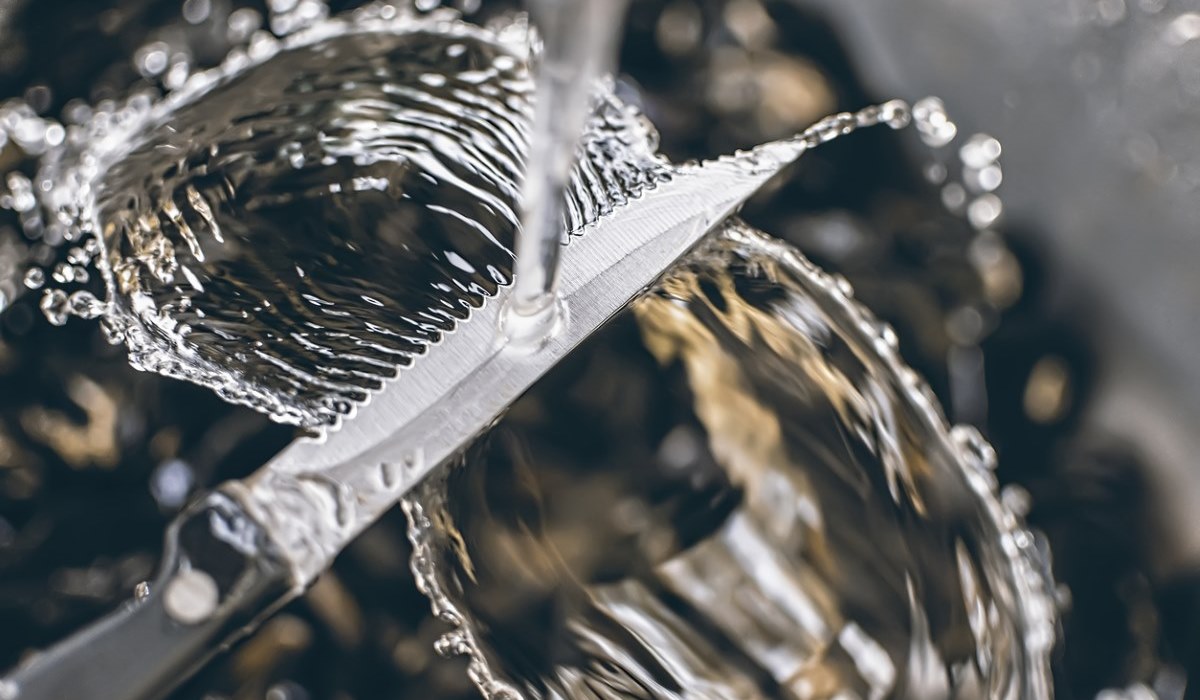Preventing knife damage – 23 expert tips

A good knife can be a chef’s best friend; however, a blunt, poorly maintained knife can very quickly turn a pleasurable job into a chore. No matter how expensive or well-recommended a knife may be, unless it is cared for properly it is unlikely to perform to its full potential.
To attain some insider knowledge about keeping knives in the best possible condition and preventing them from damage, we spoke to three experts who regularly work with chefs’ knives.
Continue reading to discover 23 top tips on getting the best out of your blades from Robin Bailey at The Sharpening Service, former chef Andrew Green and The Sharpeners.
Caring for your knives
One of the best ways for a chef to get the most out of a knife is to look after it properly. This might sounds like common sense, but many restaurants actually provide their own knives for chefs to use, meaning the condition of communal knives can be severely compromised.
A common theme raised by the experts was the importance of chefs owning their own knives and maintaining their own equipment.
- “It’s important for chefs to look after and take responsibility for their own knives. Chefs used to buy all of their own knives and if they left a job they’d take their knives with them to their new job. They were much more responsible because the knives were their own – it’s about ownership.” — Andrew Green, former chef, Craft Guild of Chefs
- “Always take your knives with you. When knives are left unattended other chefs can use them and potentially cause damage.” — Robin Bailey, The Sharpening Service
- “Stabbing hard objects or dropping knives on the floor are the main causes of bent tips.” — The Sharpeners
- “Chopping against bones or other hard objects is a common way to cause knives to chip. To prevent this you must only chop down onto a wooden board or block.” — The Sharpeners

Four common kitchen practices that prematurely blunt knives
- Washing knives in a dishwasher
- Sharpening incorrectly
- Chopping on a glass cutting board
- Storing knives together in a drawer
The Sharpeners
Knife storage
A knife can still be damaged even when it is not in use. The main reason for this is incorrect storage, as these experts explain.
- “A lot of the kitchens that chefs work in tend to have stainless steel worktops and drawers. Knives are often thrown into these drawers, which can cause damage to the tip and blade.” — Andrew Green
- “Many chefs store their knives in metal containers. I used to do this but soon found that knives rub up against each other and can easily become damaged.” — Andrew Green
- “The main way that knives become dented or scratched is as a result of them being carelessly thrown into the knife drawer.” — The Sharpeners
- “Use a knife roll to transport your knives.” — Robin Bailey
- “Chefs should use roll bags when not using their knives. Magnetic wall strips can also be used – these are great for protecting knives as this type of storage means that the blades don’t touch.” — Andrew Green
- The best way to keep knives secure is in a wooden block. If there isn’t a block available you can buy or make protective sleeves to cover the blades.” — The Sharpeners
| Knife storage | ||
|---|---|---|
| Storage type | Pros | Cons |
|
Wooden knife block |
|
|
|
Magnetic strip |
|
|
|
Loose in a knife drawer |
|
|
|
Drawer with knife storage slots |
|
|
|
Knife roll |
|
|
Sharpening
Sharpening, if not done correctly, can do more damage than good to a knife. Regularly taking your knives to be professionally sharpened is the best way to get the most out a knife and avoid costly mistakes.
- “Knives get dented by being badly sharpened. We often get knife sets where the owners have tried to sharpen them but have failed and covered the blades with scratches.” — The Sharpeners
- “Knives are often damaged by not using a steel correctly. I sharpen most knives at 15 degrees each side, most people use a steel at about 20-25 degrees, meaning that they very quickly remove the sharp edge I have put on.” — Robin Bailey
TOP TIP: A good tip is to use a felt tip pen to mark the newly sharpened edge, then use a steel and see if you are striking too high or too low, and adjust accordingly. A steel only re-aligns the edge, therefore don’t leave it too long before getting a new edge put on your knife”
Robin Bailey, The Sharpening Service
- “Once you have a professionally sharpened knife, you need to maintain it daily. This will just need a couple of swipes with the steel. Eventually it will wear and cannot be kept sharp, at which point it is time to go back to the sharpener to put the edge back.” — The Sharpeners

- “Dents and scratches can cause the blade to snag, especially when finely slicing meat.” — The Sharpeners
- “Blunt knives can cause repetitive strain injury to the wrist due to the extra pressure needed to cut, and there’s a higher risk of cutting yourself.” — The Sharpeners
- “To keep your knife sharp you need to use a steel. This helps maintains the edge for longer. When a knife seems blunt, it may just need the edge straightened using the steel.” — The Sharpeners
DID YOU KNOW?... Blunt knives cause onions to release more acid.
The Sharpeners

Cleaning
Careful cleaning also goes a long way towards ensuring that a knife remains in optimum condition.
- “Chefs should always clean their own knifes after use. In most kitchens, knives just get handed over to the pot washer who doesn’t really care about protecting them and they are often just chucked into the bottom of a sink.” — Andrew Green
- “Scratches make knives hard to clean and can quickly become unhygienic. A very expensive knife covered in scratches looks unsightly dirty.” — The Sharpeners
- “Do not wash knives in a dishwasher or they will become blunt very quickly.” — The Sharpeners
Know your knives
More often than not, knives become damaged simply because they are not being used correctly.
- “Match the knife to the work — don’t use a fragile thin-bladed knife to cut through chicken bones. I see a lot of Global and Kai knives that have bits missing because of this kind of misuse.”— Robin Bailey, The Sharpening Service
- “Using the incorrect knife for the job will damage your knife. For example, when using a boning knife you are supposed to use the heel of the knife but many people don’t or they use the wrong knife completely which will cause a lot of damage to the blade.” —Andrew Green
- “A good-quality hard-steel knife is more likely to snap rather than bend as the steel is brittle. High-quality Japanese knives often have a hardened centre core that takes the edge, this is surrounded by layers of softer steel to protect it and prevent snapping.” —The Sharpeners
- “If you are using a chopping knife down onto a wooden block, you need to check the heel of the knife to ensure it does not protrude from the cutting blade, if it does protrude it will prevent the blade from making full contact with the wooden chopping block. If you observe this, take it to your local sharpener and they will grind the heel down just below the line on the blade.” — The Sharpeners
18 January 2018





